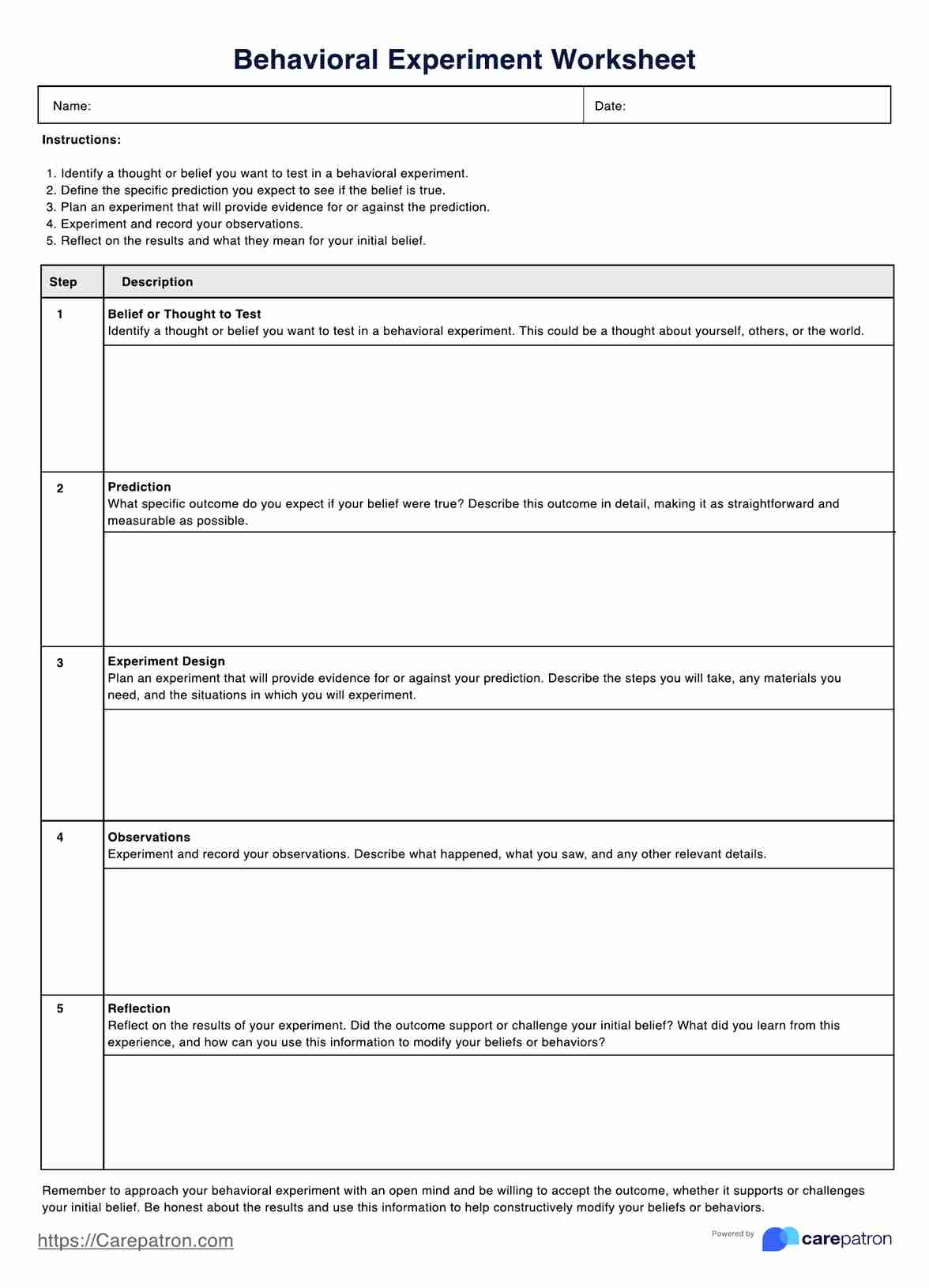To use the Behavioural Experiment Worksheet, follow these steps:
- Identify a thought or belief to test: Choose a thought or belief about yourself, others, or the world you want to test in a behavioral experiment.
- Define a specific prediction: Describe the specific outcome you expect if your belief were true, predicting as specific and measurable as possible.
- Plan an experiment: Design an experiment that will provide evidence for or against your prediction, outlining the steps, materials, and situations involved.
- Carry out and record observations: Conduct the experiment and document your observations, describing what happened, what you saw, and other relevant details.
- Reflect on the results: Reflect on the outcome of your experiment and what it means for your initial belief, considering how this information can help modify your beliefs or behaviors.












